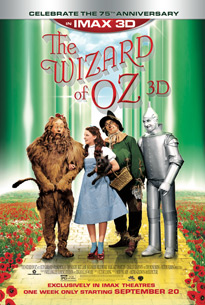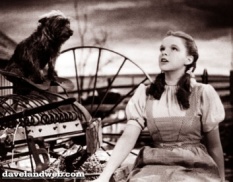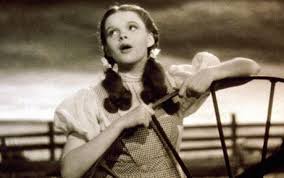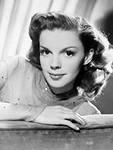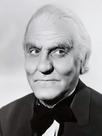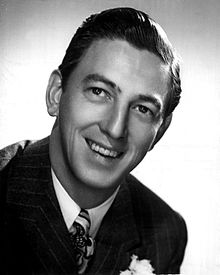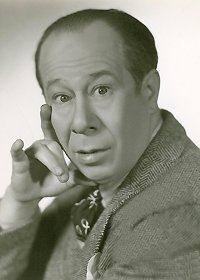Методическое пособие по практике основного иностранного языка (английский) для направления 050100 Педагогическое образование
 Скачать 0.91 Mb. Скачать 0.91 Mb.
|
|
PART I Brainstorming Discuss the following questions in your group:
Reading 1. Read Text 7. Suggest the Russian equivalents for the words and expressions in bold and translate the sentences containing them into Russian. TEXT 7. 100 GREATEST MOVIES: THE WIZARD OF OZ “By courtesy of the wizards of Hollywood The Wizard of Oz reached the screen yesterday as a delightful piece of wonderworking which had the youngsters’ eyes shining and brought a quietly amused gleam to the wiser ones,” begins Frank Nugent’s review of The Wizard of Oz published in The New York Times on August 18, 1939. Produced and distributed by MGM at a cost of $2.5 million, the film is a tribute to the Hollywood style and system of filmmaking. It was a bit of “wonderworking” indeed, as this fantasy film would forever alter the courseof the Hollywood film musical. Begun in 1938, The Wizard of Oz was produced at the apex of the classic Hollywood era, when MGM had at its disposal theforemost technical achievements available in Hollywood at that time. It was this standby of talent that made the production of a film like Wizard feasible. To mount such a project today would cost at least $50 million. Wizard was photographed in a little-used three-strip qualedd process7. It was an extremely intricateprocess to handle and required enormous amounts of light to properly expose. While it was the most expensive process available to Hollywood at the time, it yielded the unequaled color quality. The studio chose the three-strip process because it worked out well with black-and-white stock. The framing of Dorothy’s fantasy was processed in black-and-white, heightening the effect of the qualedd journey to Oz. For these reasons the production of Wizard occurred entirely indoors on the stages of MGM. Because the film was studio-bound, a lot of responsibility fell on the special effects department headed by Arnold Gillespie. Mattes were used extensively to give depth to the Kansas landscape, and a sense of distance to the Land of Oz. Intricate trick photography was employed to allow a bicyclist and a man rowing a boat to float helplessly in a tornado. No less important was the MGM art department. It was headed at the time by Cedric Gibbons whose career garnered 11 Academy Awards while at MGM. Elaborate sets were conceived and constructed in full scale to create Oz, the Wicked Witch’s sanctuary, and the throne room of the Wizard of Oz. Working with the limitations imposed by the tri-color film process, Gibbon’s department had to create a color scheme that the film stock could exploit. The result was beautiful, color-conscious scenes. Perhaps most miraculous was the role played by Jack Dawn and the MGM makeup department. It was Dawn’s task to take three nonhumans—a scarecrow, a tin man, and a lion — and bring them to life. He had to give them personalities and human characteristics that would evoke humanity amidst the costumes dictated by their roles. This was done convincingly, resulting in three of the most elaborate makeup/costume designs to date in Hollywood. The costumes did pose certain critical problems for production, however. Bert Lahr’s costume for the Cowardly Lion, for instance, weighed nearly 100 pounds. This, coupled with the intense heat caused by the lighting needed to shoot, made filming for long durations impossible, and the film had to be shot in segments with a day’s shooting often ending before a scene was complete. As a result, before the next day’s shooting could begin, makeup had to be meticulously matched and perfectly recreated toretain consistency. Daily rushes were used to aid this process. While this precision slowed down the production, the commitment to perfection became a trademark of MGM. For their efforts both Jack Dawn and Cedric Gibbons received Academy Award nominations (though Gibbon’s contract insured that his name would appear in the credits of all MGM films regardless of his involvement). This recognition, while falling on individuals, was no less a tribute to the system. It was a recognition of the elaborate collaborative nature of Hollywood filmmaking. Though Wizard remains an elaborate technical achievement for its time, the technology involved has since become obsolete. Perhaps the long term contribution of the film is the precedent it set for the type of Hollywood musical identified with MGM. Wizard was perhaps the earliest example of what came to be called the “integrated musical”. Traditionally, music in films had been incorporated in a performance setting, establishing logical moments in which to include musical numbers. In The Wizard of Oz the music became another dimension of the characters’ language, an extension of their personalities and feelings. There is no intrinsic logic in Dorothy’s singing “Somewhere Over the Rainbow”, but it is understood as a viable expressionof some inner longing. The film narrative is advanced by musical numbers. Songs often replace dialogue as when the Munchkins pay tribute to Dorothy for killing the Wicked Witch of the East. In Wizard, music isn’t a digression, but instead a fundamental part of the narrative structure. The Wizard of Oz has witnessed more than 20 years of revival on both television and in theaters, remaining widely popular. Internationally, the film has enjoyed wider distribution than any other American film in history — fantasy, musical or otherwise. It would seem that the directness of the film’s message — “There’s no place like home” — and the sincerity of its presentation is the key. However, beneath the fantasy is one of the most polished and elaborate productions ever mounted in Hollywood. Robert Winning (http://www.movieretriever.com) 2. Answer the following questions taking into account the information given in Text 7.
3. Find the equivalents of the following expressions in Text 7, give the Russian translation.
4. Use the equivalents you’ve found to fill in the gaps in the following sentences (2 sentences for each word):
5. Translate the following sentences into English using the new vocabulary from exercises 1 and 3. 1) Передовые технические достижения сделали выполнимыми множество сложных спецэффектов и обеспечивают несравненное качество цвета каждому кадру фильма. 2) Декорации к каждому фильму тщательно выполняются в полном масштабе, так как приверженность к совершенству — фирменный знак нашей киностудии. 3) Эта роль ознаменовала вершину его актерской карьеры и полностью изменила его жизнь. 4) Киносъемки — крайне замысловатый процесс, так как необходимо снимать фильм почастям, тщательно соблюдая последовательность. 5) Этот широко популярный фильм был снят как дань современной киноиндустрии, но не получил международного признания. 6) Музыка, написанная к фильму, послужила средством живого выражения чувств и эмоций персонажей. 7) Режиссер славится своей приверженностью к совершенству и не одобряет никаких отступлений от сценария в процессе съёмок. 8) Эта актерская работа стала вершиной его профессионального успеха, а фильм заслужил всеобщее признание. 9) Сюжет этой книги очень запутан, но, благодаря великолепной работе сценариста, её воплощение на экране стало возможным. 10) Несравненное качество цвета и съемки в технологии 3D произвели глубокое впечатление на зрителей. 6. Find in Text 7 at least 5 more words and expressions concerning the film industry and make up 10 sentences of your own (5 in English, 5 in Russian) for your group-mates to translate. 7. Prepare a summary of Text 7 (see Appendix 1). Use the new vocabulary. PART II Brainstorming Discuss the following questions in your group:
Listening 1. Are you an expert in the field of famous soundtracks? Listen to some of them and check your knowledge using the following table.
2. Read the following information before listening to Audio 4: “Over the Rainbow”(music by H. Arlen, lyrics by E.Y. Harburg) — a classic Academy Award-winning ballad:
(https://itunes.apple.com) AUDIO 4 (“Over the Rainbow”, music H. Arlen, lyrics E. Harburg) 3. Listen to Audio 4. Fill in the gaps.
4. Listen to Audio 4 one more time. Check your answers to ex. 3. 5. As is known “Over the Rainbow”became Garland’s signature song. Read the quotation given below. …’Over the Rainbow’ has become a part of my life. It’s so symbolic of everybody’s dreams and wishes that I’m sure that’s why some people get tears in their eyes when they hear it. I’ve sung it thousands of times and it’s still the song that’s closest to my heart… 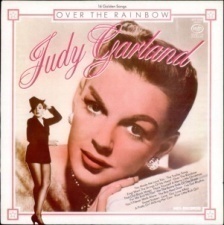 -Judy Garland- 6. Answer the following questions:
PART III Brainstorming Discuss the following questions in your group:
1. Read Text 8 and fill in the gaps with the following word combinations: the bogus embellishment, the screening, mainly in colour, spectacular, a rare treat, demonstrably worse, a first-rate 3D conversion, the clarity of the imaging, cutting-edge technology, to dim the picture, another potboiler, the artificiality of the sets TEXT 8.____________________________________ (byPeter Howell, published on September 20, 2013 ) Normally I stand with rascal pup Toto in desiring to expose false movie magic. Just as Toto yanked the curtain in The Wizard of Oz, so have I often felt inclined to expose (1) ____________ of 3D. Very few films are improved by the process, and some are made (2) ____________, as in the instances of most 2D-to-3D conversions. And yet I found myself last Sunday afternoon eagerly lining up to see The Wizard of Oz 3D at the Scotiabank Theatres. There were a lot of other excited people from young children to seniors. One woman showed me the pair of ruby pumps she had brought with her to wear during (3) ____________, in honor of Dorothy’s ruby slippers. I’ve seen The Wizard of Oz dozens of times in my childhood when watching it on my family’s old black-and-white TV was an annual tradition. I didn’t even realize that the film was (4) ____________ until I saw it for the first time on the big screen at North York’s old Willow Theatre in 1967. My main motivation for seeing the 3D version was curiosity. Had Warner Bros. spent the money and time needed to do (5) ____________, as James Cameron did two years ago? Or would it be (6) ____________ such as some recent 3D conversions? I also wondered if the 21st century (7) ____________ could possibly improve the original special effects performed by gurus of The Wizard of Oz, who managed to turn a plain nylon stocking into the terrifying twister that lifts young Dorothy Gale from Kansas to Oz. The sepia-hued Kansas opener was sharper and brighter than I’d ever seen, and I was knocked out by (8) ____________. You see the added perspective when Dorothy is peering through the wooden boards of her Aunt Em’s farm, and also when Toto is sneaking out of the basket of the furiously cycling dog-napper Almira Gulch. The value of 3D conversion really came through as I began to notice colors and details that I hadn’t really seen before, such as how the Wicked Witch comes and goes in an orange cloud of smoke when she makes her dramatic entries and exits. Finally, The Wizard of Oz brings more magic out! Unfortunately, the vastly improved visuals made me much more aware of (9) ____________: the demonstrably fake flowers, the matte landscape paintings in the background. You can see the makeup on all of the cast, especially the prosthetic lion mask the great Bert Lahr wears as the Cowardly Lion. You can detect where the Yellow Brick Road actually dead-ends into a wall, yet Dorothy goes right up to it as if it runs on without end. A couple modifications are a mystery, possibly unnecessary. Why the first portion, memorably in black and white, is tinted to sepia is unclear. And a Gothic-looking hallway leading to the wizard’s chambers is oddly elongated in 3-D so that Dorothy and her trio of pals look like toys rather than life-size. Happily, this revived version has none of the darkness common to film conversions to 3-D as the polarized glasses tend (10) ____________. It also wisely avoids the technology’s silly, ‘in-your-face’ tricks. The Wicked Witch and her evil flying monkeys don’t fly right into your face, for example, although they now seem even more sinister as they dart and hover above the Kingdom of Oz. The 3-D effects in this gleaming revision are subtle and don’t detract from the already (11) ____________ movie. The sound was also remastered making the audio crisper, all the better to hear the clever, catchy songs The real magic of this ever-shining gem from Hollywood’s Golden Age hasn’t been ruined by this adaptation for the film’s 75th anniversary which took 16 months and 1,000 people to accomplish. Clearly, it was done with care and respect. Simply seeing it on a large screen is (12) ____________. (http://www.thestar.com) 2. Look through Text 8 again. Which sentence can be used as a headline for the whole review? Suggest your own variant of the headline also. 3. Does the review correspond to the classical scheme of film analysis (see Appendix 3)? What parts are included and what parts are skipped? 4. List the advantages and disadvantages of The Wizard of Oz 3D conversion pointed out by the author. 5. Paraphrase the following sentences using the new vocabulary. 1) In spite of the wide popularity of 3D movies, some 3D versions turn out to be overloaded with unnecessary fake decorations. 2) Every display of a 3D film attracts a lot of spectators because of amazing visual effects. 3) This director’s last work was shot chiefly in the multicoloured scheme. 4) The film is famous for a decent amount of eye-catching scenes due to the fabulous work of the special effects department. 5) What an exquisite pleasure is to enjoy watching a breathtaking adventure film! 6) The problem is that behind all these 3D tricks the quality of screenplays is getting apparently worse. 7) To the fans’ great delight, the classical film finally got a first-class 3D adaptation. 8) The modern computer technologies endow all the film industry masterpieces with the unequaled clearness of the picture. 9) All thinkable up-to-date technical achievements are available in Hollywood. 10) Impressed with the final scene of that wonderful love story, she began to cry and her tears completely blurred the image. 11) His acting work in this soap-opera is regarded by critics as one more example of botchery. 12) The film is perfect in every detail except for the only flaw: the unnaturalness of the scenery spoils the whole impression. 6. Using the new vocabulary make up 10 sentences of your own (5 in English, 5 in Russian) for your group-mates to translate. Video VIDEO 6 (“The Wizard of Oz”, 1939) 7. Look through the film information (p. 48). Are the listed names familiar to you? What do you know of the director and the actors? 8. Read the following information to find out some facts about them before watching the film: Victor Fleming (1889-1949) Victor Fleming entered the film business as a stuntman in 1910, as he had been a mechanic and professional race-car driver. He became interested in working on the other side of the camera, and eventually got a job as a cameraman. 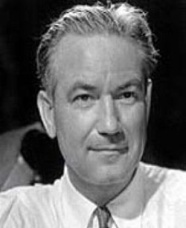 Soon, he began directing, and his first big hit was The Virginian (1929). Fleming’s star continued to rise during the ‘30s, and he was responsible for many of the films that would eventually be considered classics, such as Red Dust (1932), Bombshell (1933), Treasure Island (1934), and the two films that were the high marks of his career: Gone with the Wind (1939) and The Wizard of Oz (1939). Ironically Fleming was brought in on both pictures to replace other directors and smooth out the troubled productions, a feat he accomplished masterfully. His career took somewhat of a downturn in the ‘40s, and most of his films, with the exception of Dr. Jekyll and Mr. Hyde (1941), weren’t particularly successful. He ended his career with the troubled production Joan of Arc (1948), which turned out to be a major critical and financial failure. Judy Garland (1922-1969) (Frances Ethel Gumm) One of the brightest, most tragic movie stars of Hollywood’s Golden Era was born in a family of vaudevillians and from the early childhood travelled across America where she would perform in nightclubs, cabarets, hotels and theaters solo. | ||||||||||||||||||||||||||||||||||||||||||||||

